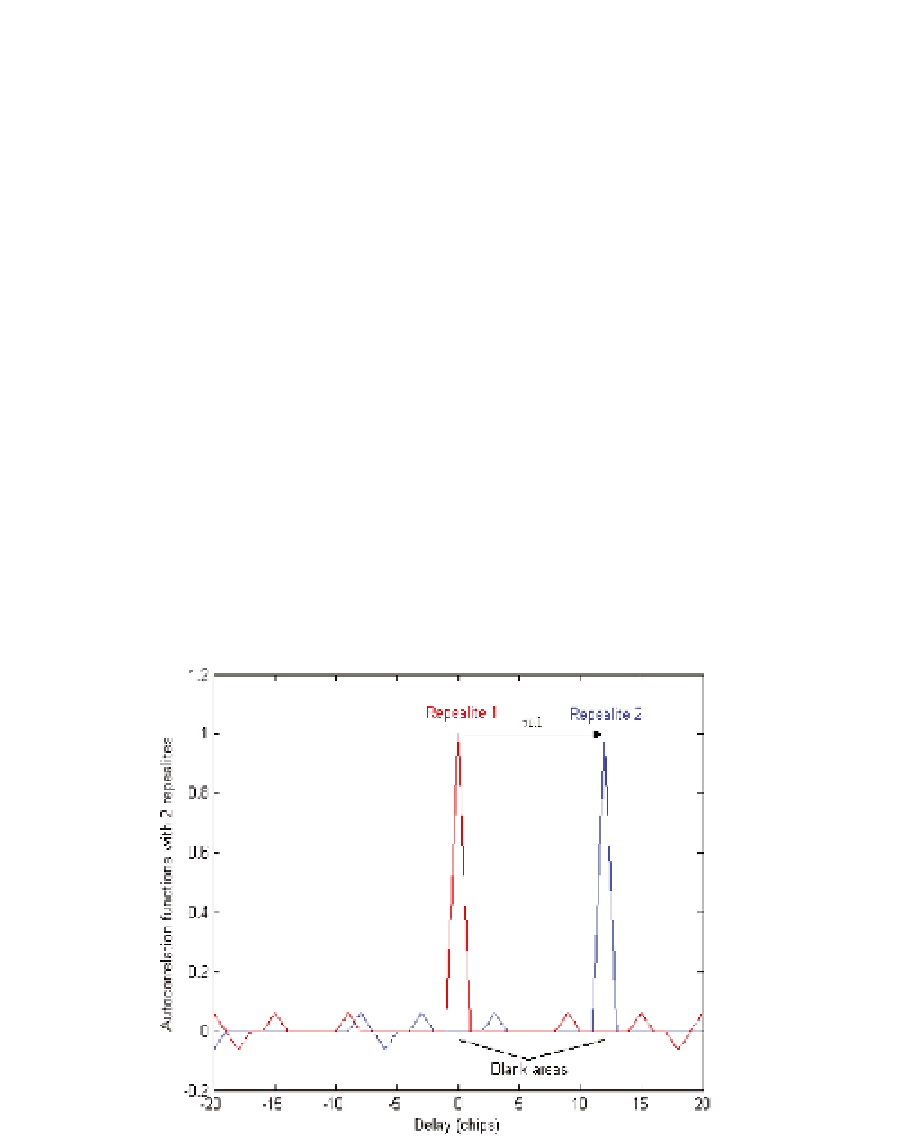Global Positioning System Reference
In-Depth Information
pseudo-range measurements are a must if one wants the smoothing of the code by the
carrier to be efficient: thanks to the SMICL, this is possible.
We have seen that the ACF of the various codes used in GNSS present secondary peaks that
are the origin of the near-far problem. In the case of the repealite based system, this problem
is enhanced since the same signal is repeated N times (in the case of N repealites transmitting
simultaneously). Thus, the interferences are of uppermost importance, in particular when
defining the delays between repealites (since superposing the repealite signal to a secondary
peak of the preceding repealite would be a particularly bad idea). Thus, a proper choice of
the delays has to be carried out in coordination with the code used and the size of the indoor
environment (because the signals should not interfere at the receiver).
A few approaches have been proposed in order to reduce the near-far effect in the case of
repealite systems, depending on the codes used. For the GPS codes, it appears that the
appropriate delays are obtained when the ACF is close to zero (see figure 24): such
“locations” are numerous but depend on the chosen code (the locations are not identical for
all codes). In order to reduce the near-far, a double transmission technique is proposed: it
consists indeed in modifying the shape of the transmitted signal in order to allow the
receiver to carry out differences that could allow it to remove the most powerful signal
which is the cause of the near-far. The signal sent is composed of the initial code to which is
added, in opposite phase, the same signal delayed by half a chip. Improvements of up to
30dB in comparison with solutions where no near-far mitigation techniques are
implemented have been reported. Note that this means still 20dB of improvement in the
power that can be managed in comparison with a pulsed pseudolite system.
Fig. 24. Optimal determination of the delays between repealites
The drawback of this approach is that it requires a specific signal to be sent and in turn a
modification of the software of the receivers which have to be aware of this specific mode.
Nevertheless, the efficiency theoretically demonstrated may be worth implementation.

Search WWH ::

Custom Search